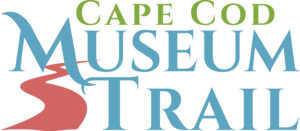Since its inception, the Cape Cod Museum of Natural History in Brewster has certainly come a long way. Founded in 1954 by naturalist John Hay, the museum was in a tent when it was first established.
“It has evolved over the years to become a place where we have 400 acres and have many different programs and exhibits,” said Theresa Izzo, who organizes activities year round. Overlooking the flats of Cape Cod Bay, “we are set in the most beautiful of places,” she says.
The moment you step into the museum, you’ve entered another world.
The front hall is home to a Wampanoag exhibit, “People of the Land,” in addition to an archeology display. The appropriately titled John Hay Room boasts a variety of games and activities that help children learn about science and search different areas of STEAM (science, technology, engineering, arts, mathematics).
The Marshview Room features preserved local animals, including the coyote. Here you can view the OspreyCam in season, gaining a very intimate view of the osprey nest in the nearby marsh.
The museum even has a history of beekeeping, complete with a three live beehives on display across the museum’s campus.
Bird Alley has a collection of 200 preserved birds whose Cape Cod habitats range from the forest to the marsh to the beach. Visitors also are introduced to the art of bird banding, attaching a small tag to a bird’s leg or wing for future recognition.
The museum also offers several bird programs including Tuesday Tweets and “Birdwatching for Beginners.”
Aquatic life is just as important to Cape Cod’s natural environment. The museum boasts the best aquarium on the Cape – including a tide pool.View a blue lobster.
The museum also is home Myrtle the Turtle, a 23-year-old Diamond Back Terrapin that can be found in Turtle Bay.
Even some of the biggest animals found on Cape Cod have their place in this institution. Both excitement and learning can be found in the museum’s giant blowup figures of the gray and humpback whales. At 44-feet long, the inflatable humpback allows visitors to literally walk inside these massive creatures. A whale expert teaches about the components of the mammal, from the heart and lungs, to the function of its exterior.
“They are a great learning tool for visitors and children,” Izzo says of the interactive inflatables. “It’s a hub of activity.”
The nature of the beast
The Cape Cod Museum of Natural History is an interactive learning environment. Its summer day camp serves children three to 14.
One of the museum’s most popular activities is Mudflat Mania where you get a closeupu view of species living within the Cape Cod flats during low tide.
The museum also displays art through its NatureScape Gallery that features the work of local artists. Inside the gallery, works ranging from paintings and watercolors, to photography and quilt art are all on display.
Keeping the visitors at heart
With its expansive range of programs and exhibits, the museum staff is always present to guide and teach visitors. “We try to feel the pulse of what the community is interested in,” Izzo explains.
That includes the rising number of shark sittings along the Cape coast and more transcendent issues such as global warming and climate change.
The museum couldn’t thrive without the help of its devoted 300 volunteers, who all go through “rigorous training” to provide accurate facts and expertise about our environment to the many visitors who come to the establishment.
“They have someone with them that can give them a wonderful overview of the natural world,” says.
Altogether, the Cape Cod Museum of Natural History acts as a place of serenity and insight. From the gorgeous walking trails that stretch out along Stony Brook Valley to the live animals that call the museum home, this institute is one that fully embodies all of the natural beauty that can only be seen on Cape Cod.

Leave A Comment